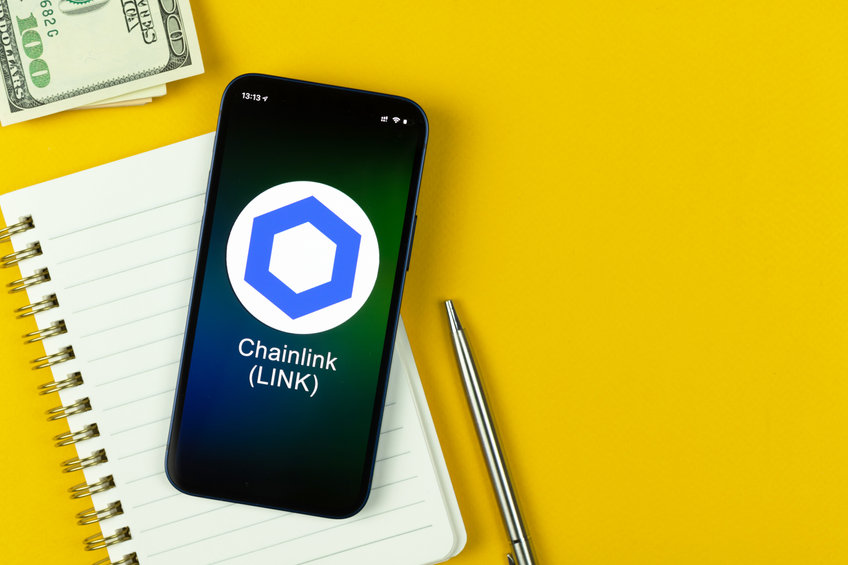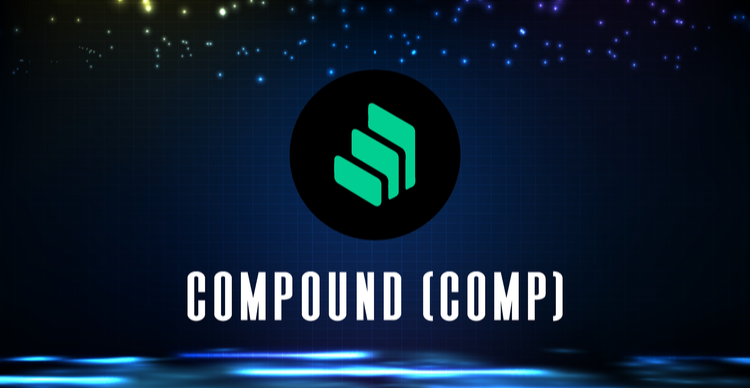
Für den einflussreichen Krypto-Hedgefonds 3AC scheint die Zeit nun abgelaufen zu sein, nachdem zuletzt die Kryptobörse Voyager Digital beträchtliche Rückzahlungen eingefordert hat.

Finanzmittel Info + Krypto + Geld + Gold
Krypto minen, NFT minten, Gold schürfen und Geld drucken

Für den einflussreichen Krypto-Hedgefonds 3AC scheint die Zeit nun abgelaufen zu sein, nachdem zuletzt die Kryptobörse Voyager Digital beträchtliche Rückzahlungen eingefordert hat.

Robinhood listed Chainlink’s LINK on Tuesday.
LINK’s price rose by 9% but has lost by a similar percentage.
LINK sits at support, but bearish pressure is on.
On June 29, Robinhood announced that it had listed Chainlink’s token LINK/USD. The price popped up to 9% following the announcement. However, since then, LINK has lost by a similar margin.
Chainlink’s LINK price reaction underlies the innate volatilities of cryptocurrencies. It shows that cryptos are yet to escape the bear territory. Thus, investors would be better off trading short-term opportunities. Besides, listing at Robinhood comes when the brokerage firm is under pressure. Trading volumes on the online trading platform have crashed together with the bearish market. We find that the listing has little fundamental significance as long as weak sentiment remains.
Chainlink is a decentralized blockchain with nodes or oracles for data transfers. The network enables data and information transfers from off-blockchain sources to on-chain smart contracts. The process solves the reliability issues faced if a single centralized data source is used.
Just like any other cryptocurrency, Chainlink’s LINK has faced volatility. It is safe to say that the crypto has failed to replicate prior gains. The token’s high remains at $52 in May 2021, while the current trading is at $6.2. In early June, the blockchain announced its long-term road map called Chainlink Economics 2.0. The road map highlights a new era of security and growth, including introducing staking. LINK’s price recovered strongly, but weakness persists.
 Source – TradingView
Source – TradingView
LINK sits at support of $6.2 after shedding Tuesday gains. Bearish pressure remains as the Robinhood listing fails to give lasting impacts. We do not recommend a buy at the current level.
Chainlink’s LINK rose and fell again after listing at Robinhood. The crypto token is bearish at key support. Buyers should be aware that the token could fall further.
The post How likely will Robinhood’s listing support Chainlink’s token as price pumps? appeared first on CoinJournal.

Compound token doubled in value this month.
The token met resistance at $56.
COMP is currently bearish but has a reference bottom at $27.
Compound token COMP/USD is a top gainer cryptocurrency this month. It traded at a low of $27 in mid-June before climbing to a high of $56 on June 26. The gain doubled in less than two weeks. Comp is now retreating and is trading at $48. We believe COMP/USD is showing promising signs of recovery, and investors should take note.
Compound claims to be an algorithmic and autonomous interest rate protocol for developers. The DeFi protocol also rewards users for depositing their tokens in supported liquidity pools. The network achieves this by matching borrowers and lenders while rewarding the liquidity providers. It then makes sense that Compound has a space in the decentralization of finance.
Crypto volatilities and the nascent industry of DeFi have slowed the uptake of networks like Compound. The network’s token COMP has been subdued as it trades significantly lower from its all-time high. However, COMP bottomed at $27, and investors should be keen to catch another bottom.
 Source – TradingView
Source – TradingView
Technically, COMP’S established resistance is at $56. The price is retracing after hitting the level. The MACD confirms a developing bearish momentum. The MACD line crossed below the moving average. The price of $56 also coincided with overbought conditions as the RSI touched 78. However, we believe COMP is unlikely to fall below $27, which is the overbought level. Investors should be keen to buy lower from the current retracement above $27. Long-term COMP recovery will be experienced if it breaks above the strong resistance of $56.
COMP has doubled in value in July. The cryptocurrency is retracing after meeting resistance at $56. We expect the current weakness to continue until the token finds support. Investors should be keen to buy lower but above $27.
The post Should you buy Compound’s token after doubling its value in June? appeared first on CoinJournal.

Polkadot, the eleventh biggest cryptocurrency with a market cap of over $7 billion, might be getting a revamp of the entire governance system.
The proposal, which is known as Gov2 while in development, can be summarised overall as striving to increase both the decentralisation and decision-making efficiency of the network. In order to do this, referenda will be the only first-class decision-making mechanism. It will contrast with the current form of governance in that many decisions can be happening simultaneously.
With the system that has been in place for the last few years, a technocratic committee has managed issues such as timelines; an approval-voted, elected executive “government” has managed parameters, admin and spending proposals; for everything else, a general voting system has been in place, with long-term stakeholders rewarded with increased influence.
This current system has served to limit the number of decisions occurring at once, given the single “all or nothing” referendum model — that is to say, all referenda carry the maximum amount of power. Partly due to this, there can only be one referendum voted at a time and these votes last multiple weeks by default. Additionally, the elected executive is a centralised body and also not anonymous, hence can be pressured one way or another.
However, the current system also offers features that won’t be changed here. For example, 50% of the total stake in the system should, if they have sufficient strength of conviction in their opinion, be able ultimately to command the system’s future. There will also be a greater weight assigned to those who are willing to lock their tokens into the system for longer.
Let’s take a look into how a referendum works, given the new network could be running off these soon.
When a referendum is initially created, it is immediately votable by anyone in the community. However, it is not in a state where it can end, or otherwise have its votes counted, be approved and summarily enacted. Instead, referenda must fulfil a number of criteria before they are moved into a state known as Deciding. Until they are in this state, they remain undecided.
The criteria which need to be met are threefold: Firstly, all referenda have a lead-in period. This is an amount of time which must have elapsed after the proposal before deciding can begin, providing a notice period which mitigates the possibility of “decision sniping”, where an attacker controlling a substantial amount of voting power might seek to have a proposal passed soon after proposing it, not allowing the overall voting population time to consider and vote.
Secondly, there must be room for the decision. All tracks have their own limit on the number of referenda which can be decided simultaneously. The more potent the Origins allowed on the track, then the lower this limit.
Finally, a Decision Deposit must be paid to mitigate against spamming or bloating the system.
Proposals which are not approved after 28 days are considered rejected by default. At this point, the Decision Deposit can be refunded.
Of course, there are issues whereby a proposal being voted on is revealed to contain a problem. In Gov2, there is a special operation for intervening in this way known as Cancelation. This operation immediately rejects an ongoing referendum regardless of its status.
Cancellation is itself a governance operation which must be voted upon by the network in order to execute. This poses a possible problem of timeline, and in order to be useful, getting a cancellation proposal passed must be significantly faster than any possible target proposal passed. As such, cancellation comes with its own Origin and track, which has a low lead-time and approval/support curves with slightly sharper reductions in their thresholds for passing.
It’s a neat way to balance the fear of centralisation with the realities of efficiency.
Of course, this is all only a proposal. Nonetheless, there are some very interesting aspects to Gov2 and it will be intriguing to see how it ends up. Bear markets are both a time to build and a time to improve existing infrastructure, so it’s promising to see proposals such as these, whether it ends up passing or not.
Gov2 is set to launch on Kusama imminently, following final professional audit of its code. Following a test period on Kusama, a proposal will then be made for the Polkadot network to vote on.
The post New referendum-led governance structure proposed for Polkadot appeared first on CoinJournal.

Adaswap, a Gal Gadot-backed decentralized exchange (DEX) platform on the Cardano network, has launched its public testnet.
A press release shared with CoinJournal stated that the Adaswap DEX, also backed by Shima Capital, was going live today 29 June 2022.
According to the platform’s team, the testnet launch makes the project among the very first to tap into the capabilities of the Ethereum Virtual Machine (EVM).
The project went live on the Milkomeda Network.
With the testnet launch via Milkomeda Network, Adaswap is looking to tap into the benefits of a layer-2 protocol with over $36 million in TVL.
The team notes that among the key benefits for builders will be the ability to deliver EVM capabilities to non-EVM compatible blockchains.
This, they added via the announcement, enables the extension of Cardano’s ecosystem to projects that seek to build advanced products and services.
AdaSwap CEO Itai Levi said:
“Deploying on Milkomeda has allowed Adaswap to deploy at a rapid pace and bring lightning-fast usability to our DEX for Cardano native assets. We can’t wait for our community to explore these new opportunities and bring a new wave of liquidity to the Cardano DeFi ecosystem. We’re also looking forward to the blockchain interoperability benefits that Milkomeda will offer.“
Adaswap has been building towards the launch of its testnet over the past month, with the team noting in early June that they were focused on delivering this milestone despite the tough market conditions.
The Market might be 📉temporarily, but at #adaswap we keep building. And when the market comes back 🆙 we will be ready to🚀
Testnet is so close we can taste it!#altcoins #Cardano #ADA #cryptocurrency
— AdaSwap – The next-gen Cardano DEX! (@adaswapapp) June 7, 2022
Earlier in May, Adaswap announced the NFT marketplace ADANFT, which was launched in collaboration with globally renowned artist Jonathan Paul, aka Desire Obtain Cherish.
The post Cardano ecosystem builder AdaSwap launches public testnet appeared first on CoinJournal.